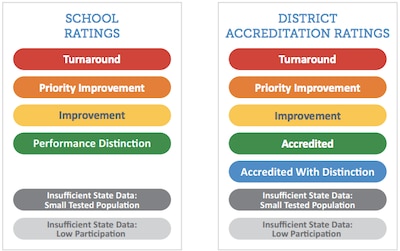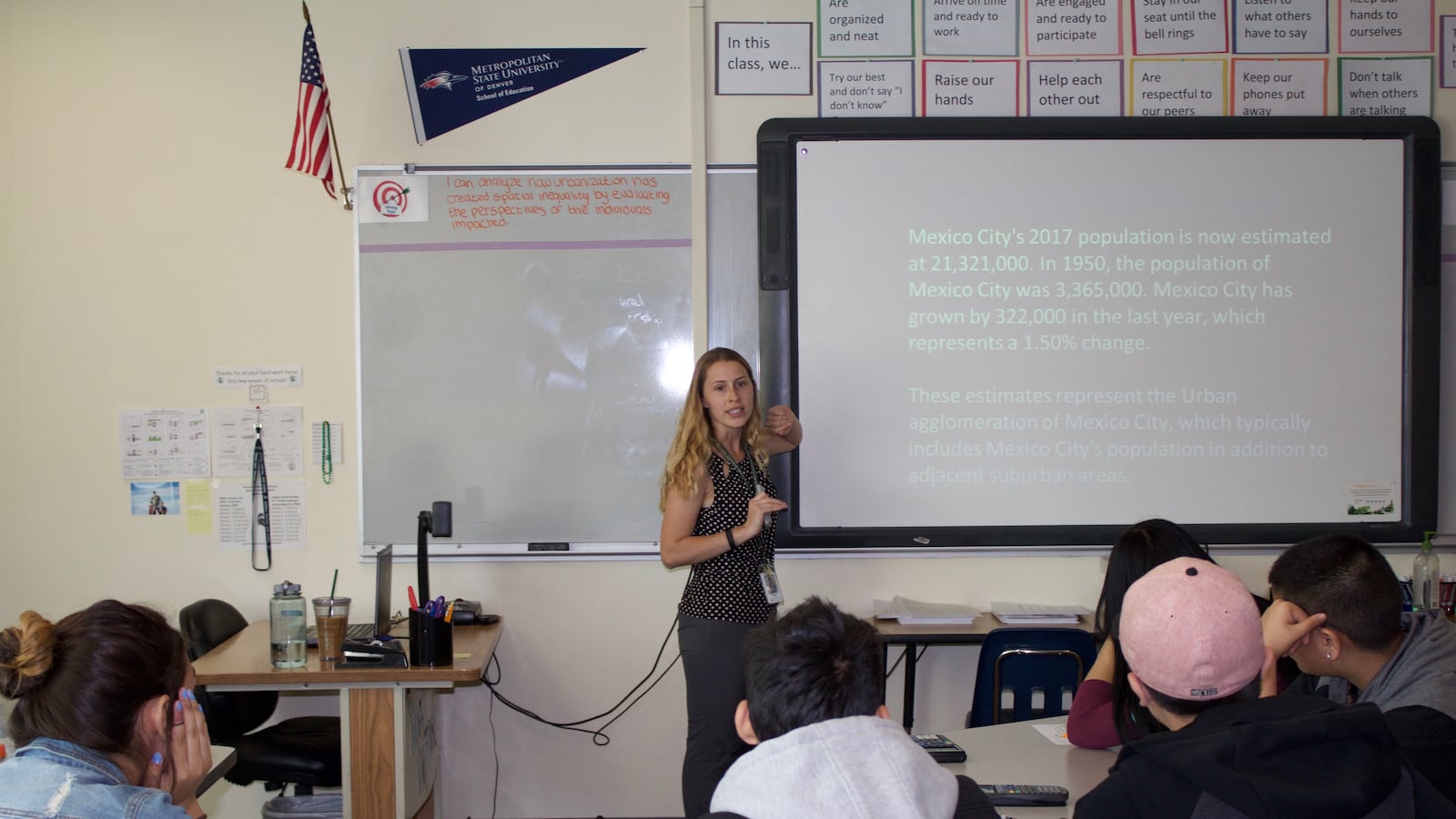Aurora Public Schools has improved enough to pull itself off the state’s watchlist for persistent low performance, according to preliminary state ratings made public Wednesday.
The district of about 40,000 students was staring at state intervention if it didn’t move the needle enough. Last year marked the first time Colorado schools and districts faced such a fate under the current accountability law, and Aurora would have been the largest district on a state-ordered plan.
The district saved itself by earning a state rating of “improvement,” no longer in the bottom two categories of performance.
“We’re excited about our momentum,” Superintendent Rico Munn said. “We are moving in the right direction.”

Improvements to Aurora’s state test scores and its high school graduation rate helped move the district’s rating up. Munn credited work in the district helping teachers align their instruction to state standards, and focusing on individual students.
“It’s the culture that says we need to make sure we recognize and identify where our kids are,” Munn said.
No district faces state sanctions for too many consecutive years of low ratings, but a handful of schools might based on the preliminary ratings. Some of the schools are alternative education schools, which won’t get their preliminary ratings until next month.
Last year, five districts and a dozen schools were the first to reach the end of the rope and faced state action in the spring. State officials could have closed schools, turned them over to charters or merged districts. But they used a lighter hand, working with local educators to create improvement plans.
Those districts and schools are now on two- and three-year deadlines to improve or face possible additional consequences.
Their performance in year one, based on Wednesday’s preliminary ratings, was mixed. One district, Julesburg, already improved as much as it needed to under its state plan.
“People are doing the work, and it takes time to do the work,” said Alyssa Pearson, the state education department’s associate commissioner for accountability and performance.
The Commerce City-based school district Adams 14 is already celebrating a step in the right direction toward meeting its improvement goal on time.
Adams 14 moved up one level in rating categories from “turnaround,” the lowest possible rating, to “turnaround on priority improvement.” Ten of its 11 schools saw improved ratings from last year. One school, Kearney Middle School, is now the first in the district with a “performance” rating — the highest rating possible for a school.
“We’re just very happy and motivated,” Superintendent Javier Abrego said.
Kearney’s principal told students at a celebration Wednesday morning that they now have to work even harder and asked students to listen to their teachers.
“You know what’s harder than getting to the top?” Principal Veronica Jeffers asked. “It’s staying there.”
Westminster Public Schools as a district made small improvements, earning 41.5 percent of points this year, up from 40 percent last year. That was not quite enough to move up in ratings, but just a few points away from an improvement rating that is the the district’s goal in its state-ordered plan.
Districts have until Oct. 16 to contest the preliminary ratings. State officials will consider whether the concerns are valid and whether new evidence of performance is convincing before finalizing ratings later this fall.
Some of the requests to reconsider will be based on low test participation. In some cases, the state lowered ratings if not enough students took state tests, reasoning that it was hard to know whether the scores were representative of an entire school. Westminster and Aurora officials already have said they will ask for ratings to be reconsidered because of the participation issue.
Aurora Central High School, a school that ran out of time on the accountability clock last year and is now under a state plan, would have earned enough points to improve its rating from turnaround to priority improvement based on its scores.
But because of low test participation on one key test — just 84.9 percent of sophomores took the PSAT — the preliminary rating was knocked back down to turnaround.
Aurora superintendent Munn said the district likely will ask the state to reconsider that decision.
After the ratings are final, hearings will be scheduled in the spring for the state board to make final determinations on the fate of the low-performing schools.
Schools and districts may provide the state with additional information to boost their ratings before they’re finalized later this year. In previous years, only a few dozen schools would request a rating increase. However, since some schools have seen participation in testing plummet, more schools are asking the state to take a second look.
More than 200 schools and 40 districts requested a higher rating last year.
Chalkbeat’s Nic Garcia contributed information to this report.

